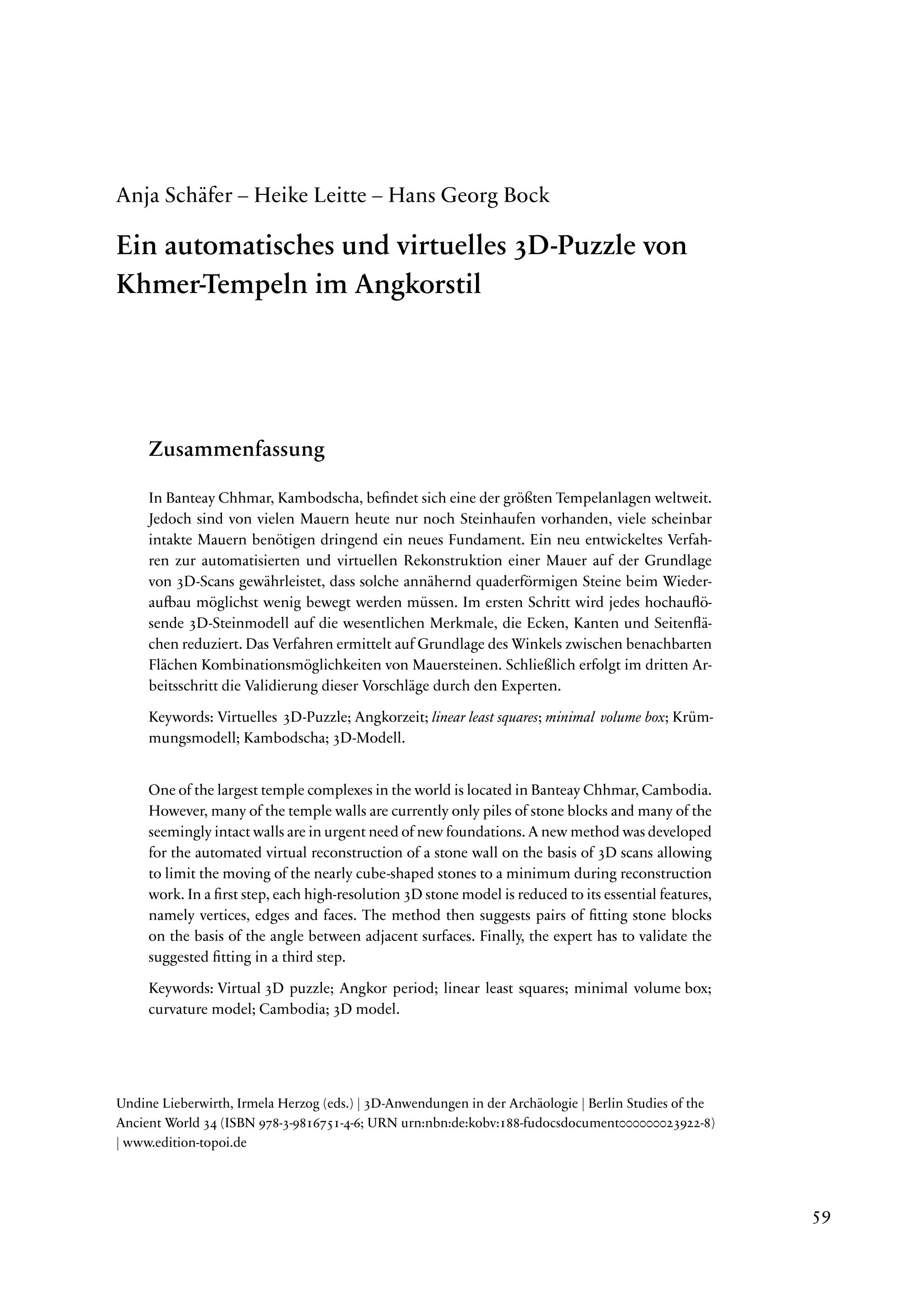Ein automatisches und virtuelles 3D-Puzzle von Khmer-Tempeln im Angkorstil
One of the largest temple complexes in the world is located in Banteay Chhmar, Cambodia. However, many of the temple walls are currently only piles of stone blocks and many of the seemingly intact walls are in urgent need of new foundations. A new method was developed for the automated virtual reconstruction of a stone wall on the basis of 3D scans allowing to limit the moving of the nearly cube-shaped stones to a minimum during reconstruction work. In a first step, each high-resolution 3D stone model is reduced to its essential features, namely vertices, edges and faces. The method then suggests pairs of fitting stone blocks on the basis of the angle between adjacent surfaces. Finally, the expert has to validate the suggested fitting in a third step.
In Banteay Chhmar, Kambodscha, befindet sich eine der größten Tempelanlagen weltweit. Jedoch sind von vielen Mauern heute nur noch Steinhaufen vorhanden, viele scheinbar intakte Mauern benötigen dringend ein neues Fundament. Ein neu entwickeltes Verfahren zur automatisierten und virtuellen Rekonstruktion einer Mauer auf der Grundlage von 3D-Scans gewährleistet, dass solche annähernd quaderförmigen Steine beim Wiederaufbau möglichst wenig bewegt werden müssen. Im ersten Schritt wird jedes hochauflösende 3D-Steinmodell auf die wesentlichen Merkmale, die Ecken, Kanten und Seitenflächen reduziert. Das Verfahren ermittelt auf Grundlage des Winkels zwischen benachbarten Flächen Kombinationsmöglichkeiten von Mauersteinen. Schließlich erfolgt im dritten Arbeitsschritt die Validierung dieser Vorschläge durch den Experten.

